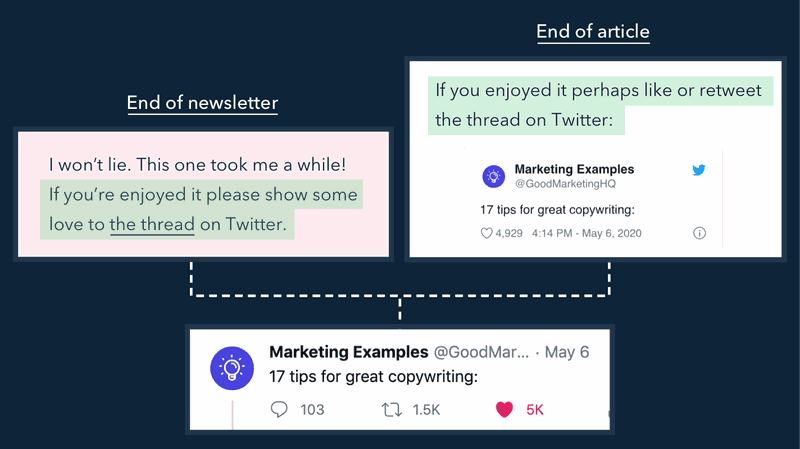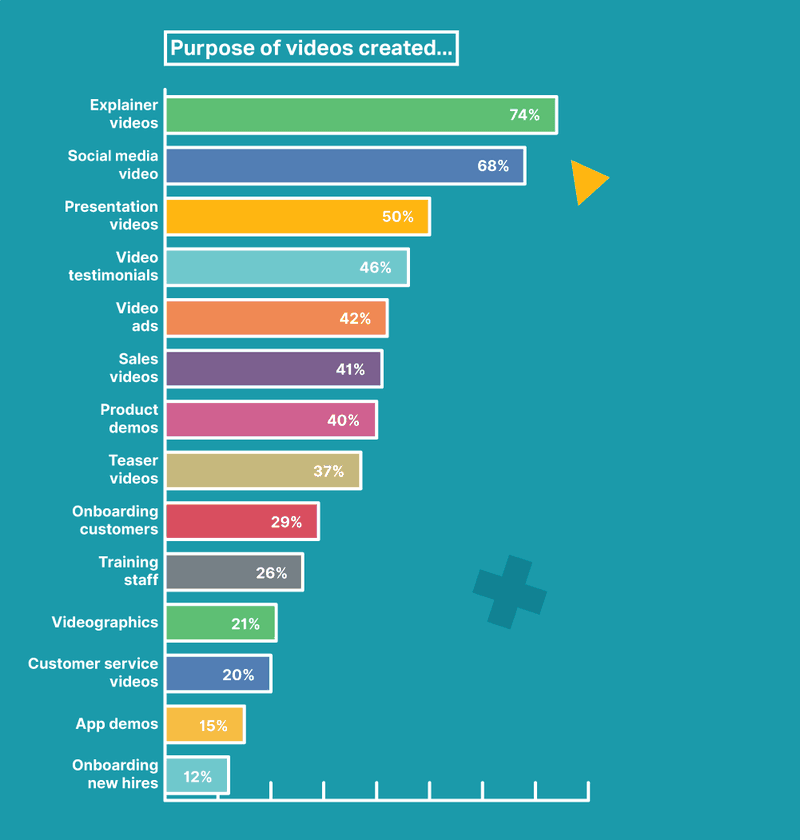Content Marketing Skills: 9 Must-Haves for Content Success in 2025
Learn which content marketing skills you need to have on your team to succeed and put on your job description to hire the best talent out there + [Expert Advice]
Updated November 7, 2024.

The job description for content marketing is 5X longer than it used to be.
New skills and competencies continue popping up and brands just want more. More SEO chops, better writing skills, better graphic design, community management on steroids, you name it. The list is endless.
Candidates are confused. Any marketer starting out in this field or even a veteran who’s just gotten laid off doesn’t know where to start. They want to pick up some skills for the next job but continue to get disappointed because every brand wants the perfect marketer.
The problem is also that brands don’t know what they really want. There is so much under the umbrella of content that they don’t really know what’s going to succeed, what works, and what doesn’t.
So we wrote this post to simplify things and identify the top skills that aspiring content marketers need to learn, without all the fluff.
We’ve gathered some of the most prolific content marketers and content marketing agencies on the planet and asked them for their best advice. And we’ve included some examples from incredible brands to show you these content skills in action.
Are you an aspiring content marketer?
Frustrated marketing manager trying to scale your content operation?
This post is for you.
1. Simplicity is the foundation of writing
First and foremost, you need to write well. No surprise here. AI copy tools like Jasper or Copymatic have not yet reached enough market penetration to become mainstream and content marketers still need to be able to explain difficult concepts in written form.
Eli Schwartz was previously the Director of Growth at SurveyMonkey and has recently become a Growth and SEO Consultant to many famous brands (IBM, Shutterstock, WordPress, Zendesk, and Quora). He attributes much of his success to his ability to explain difficult concepts simply and succinctly.
The leading content out there tries very hard to keep it simple. A good example of this is Brian Dean’s blog where he is known to explain every concept in such a simple way that non-techy marketers can grasp it.
2. SEO & organic traffic are still at the forefront
Organic traffic from search engines is one of the biggest sources of valuable traffic to websites. Studies show that 53% of traffic to websites and 40% of revenue comes from organic traffic.
So while social media platform algorithms change, and brands have to shift their focus from one platform to the next, Google remains a pretty stable source of traffic for many businesses.
The reason SEO is so powerful is that it helps businesses reach users that are in specific stages of the buyer journey.
Brands can create catchy content pieces for top-of-the-funnel users, shopping or comparison guides for middle/bottom-of-the-funnel users, and optimize their product pages for those searchers that have the highest purchase intent.
3. Analytics and measurement are critical
One of the most overlooked areas of content marketing is measuring how your content performs. So many marketers rush to publish new shiny blog posts and fail to first look at their data to determine what worked and what didn’t.
A content marketer has to get really good at analyzing the SEO metrics and the traffic that each post gets. They should also set up sales tracking to see how many leads, SQLs, and customers each piece of content brings.
Content doesn’t live on a pink cloud anymore. It has to be very much connected to the overall marketing strategy and the business goals of the firm. Content marketers have to constantly evaluate which pieces of content help the business achieve its goals and which don’t.
4. Social media marketing
Social media remains one of the most important skills for a content marketer to have. You would assume that startups and small companies want to hire someone that can do both content and social and that’s why they put it on the job description, but this skill is relevant for companies of all sizes.
For a lot of companies, organic search is the biggest source of traffic with social media coming in at a close second. So the ability to interact with users on the platforms that they hang out on is more critical than ever.
Eden Bidani, a conversion copywriting expert, says that it’s not enough to share your content on a social media page somewhere. You have to be really strategic about it.
Great content planners know how to engage on each platform, the types of content to post, the right format to use, and how to really hook their audience.
5. Content promotion and distribution
Another critical component of any successful content marketing strategy is how you distribute your content. It’s not enough to optimize your content for SEO, plop it on a search engine and hope it ranks for something.
Karine Bengualid is one of the most sought-after content writers in the world, and she had this to say:
Karine has written for some of the biggest brands on the planet like Shopify, and she’s seen it all - the companies that promote their content and those that don’t even try.
The top companies get really good at promoting their content on social media platforms, re-purposing it on other publications, and re-creating it using different mediums. One blog post can (and should) turn into a short YouTube video, a guest post on Medium, a Twitter thread, and a podcast episode.
One of the most prolific content distributors on the planet is the famous Harry Dry from Marketing Examples. Back in 2019, he was a young college kid that had no product and no audience. He started reading marketing books and sharing his insights and a year and a half later he had 38,000 newsletter subscribers.
What’s Harry’s secret? He got really good at promoting his content.
One of the most brilliant techniques Harry uses is that he creates a Twitter thread for each of his blog posts. He displays it at the end of the post (or email newsletter) and asks people to share. The concentrated engagement breaks the Twitter algorithm and gets him even more exposure.
6. Team Management & remote hiring
Team management is a critical component for any content marketer. It involves managing in-house writers and editors as well as freelancers. They need to have basic marketing management skills to be good at their job.
A lot of companies are cautious with content marketing and start out with a one-person content team. Once traffic picks up, they start scratching their heads, trying to figure out how to expand the operation. Sometimes the right choice is to hire an in-house content marketer and sometimes it’s working with an outside agency or a freelancer marketplace.
A good content marketer needs to be versatile and have the chops to manage both in-house employees and freelancers. Think: remote hiring. They should be able to easily train a remote team.
7. Graphic design and video scripting
Content marketers need to have an eye for design for both graphic and video content. 86% of businesses use video as a marketing tool and 92% of marketers consider video an important part of their content marketing strategy.
Wyzowl surveyed over 500 marketers in 2021 and found out the most common types of videos created:
74% of marketers said they create explainer videos, which are used to explain the product or service they offer. And 68% said they create video content for social media. Video is especially important as a content strategy for eCommerce brands, where products are visual and customers often want to see how they are used.
The popularity of video has contributed to the rise of platforms like Vine (RIP), TikTok, and Snapchat which engage millions of users around the world. Creating content specific to these platforms is usually the job of a social media manager but more often than not it’s dropped on the content marketer.
Companies are increasingly looking for content marketers that can write video scripts and/or create video content from scratch.
8. Adding visual elements to each content piece
Gone are the days of stock photos and giant infographics. The top blogs and online publications create their own branded images and do so for two reasons:
- Branded images create a better user experience for the reader and improve engagement on the page.
- Creating images that will be shared helps them rank on Google’s image search.
37% of marketers say that visual content is their most important type of content.
Design is one of the most important elements of a good piece of content because first impressions matter. Brian Dean, the creator of the world’s most popular SEO blog, gets over 500,000 monthly organic visitors partly because of its clear design.
It’s going to be increasingly important for content marketers to lead design efforts. We’re not just talking about the thumbnail for the blog post. Each post should come with its own branded graphs, statistics, infographics, and screenshots that help display the content visually.
Here’s what that looks like in action:
9. Creating powerful lead magnets and tools
Another really powerful skill in the content marketer’s arsenal is the ability to create lead magnets, template libraries, and free tools to their audience. In fact, it’s one of the ways that we’ve been successful with Mayple’s blog.
Two years ago we created a free template using Google Sheets to help people plan their marketing campaigns better. We made it completely free and didn’t even ask for an email address to access it.
Fast forward to 2022, the post has gotten over 2,000 backlinks from over 400 domains and continues to bring the more than 75% of our organic traffic every month.
What’s even more impressive is that this helped us to start ranking for super competitive keywords like “online marketplaces” and “marketing strategy”. Once you show Google that you are an authority on a certain topic then it becomes easier to rank for related topics.
Building a library of free tools, templates, and calendars will attract your target audience and will create a snowball effect that unlocks hypergrowth. Being able to create high-value assets is a skill that is essential for every content marketer to master and will become even more relevant in the years to come.
How to pick your content marketing track
Don’t try to master every content marketing skill we described. Learn one at a time and in a specific order. These skills should be divided into two tracks - the Head of Content track and the Branding Manager / Social Media / Content Writer track.
Head of Content track
This track is for content marketers that want to lead content teams and not be involved so much with the grunt work of social media, web copy, or brand-related efforts. The skills that these folks need are in the following order:
- Become a great writer & editor
- Master SEO
- Learn to analyze your content metrics
- Create a few lead magnets and tools
- Lead graphic design & video efforts
- Learn content promotion & distribution
Pro tip: you might need some advertising skills if you want to collaborate with the ads team.
The Brand Manager / Social Media / Content Writer track
This track is more of a multi-disciplinary approach for versatile content marketers that want to be involved in several areas of marketing, including social media, and brand promotion. The skills that these folks need are in the following order:
- Become a great writer & editor
- Learn to analyze your content metrics
- Master content promotion & distribution
- Graphic design + video creation
- Create lead magnets & tools
- Learn CRO
- SEO (optional)
It’s also ok to learn these disciplines out of order, especially if you see yourself lacking in one or several particular skills. Looking for an expert content marketer to join your team? Find some of the best talent on Mayple.









